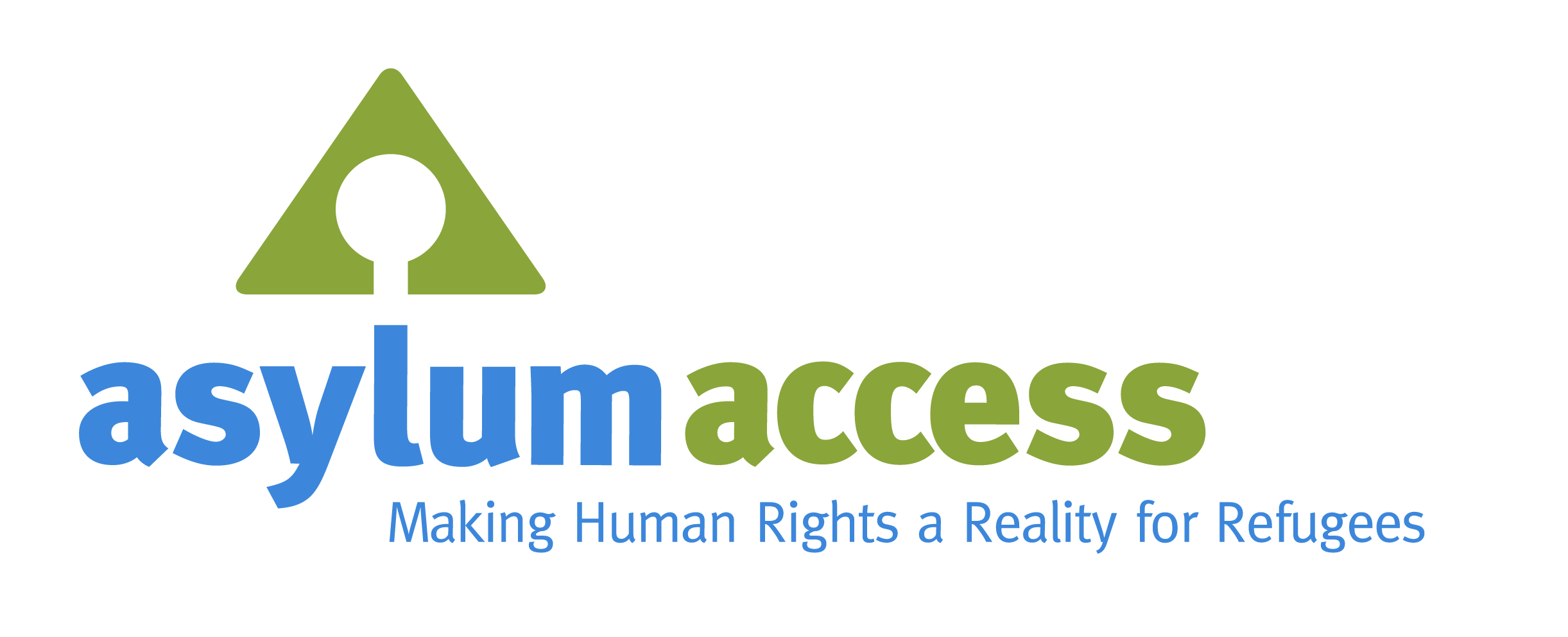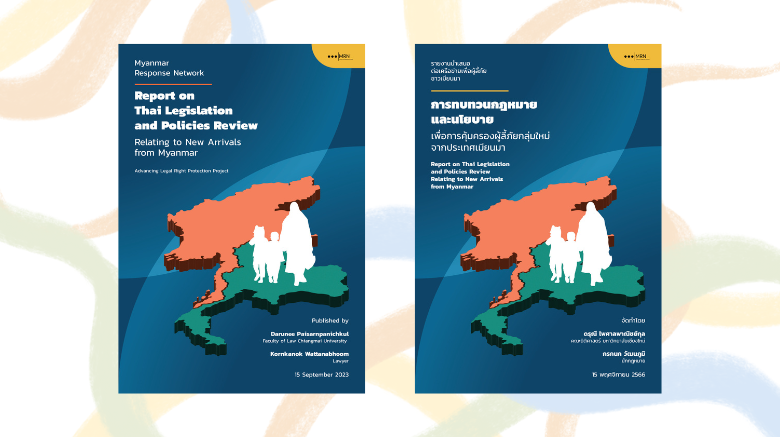Despite not being a state party to the 1951 UN Convention on the Status of Refugees and its 1967 Protocol, Thailand has been offering humanitarian assistance to refugees for centuries, including to the newly arrived refugees from Myanmar in the last few decades. Many of the individuals and families arriving from Myanmar in recent years have been forced to flee violent conflict and targeted persecution in their home country.
Since last year, Thailand has begun implementing a National Screening Mechanism (NSM) to screen “individuals believed to have been affected by persecution if deported outside the Kingdom” enabling them to potentially attain the status of a “protected person” and to receive some rights and protections akin to being a refugee. This is an important opportunity to improve the rights of refugees in the country and formalize how they are assisted and protected. However, certain barriers remain to its effective implementation.
Asylum Access Thailand has been advocating for the rights of forcibly displaced people in Thailand since its founding in 2007. In 2021, Asylum Access Thailand formed the Myanmar Response Network (MRN) together with six other organizations to focus specifically on the challenges faced by refugees from Myanmar. The latest report from the coalition details those main challenges, as well as recommendations to improve Myanmar refugees’ access to their rights and their integration into Thai society.
Challenges for newly arriving refugees
Even though Thai laws do provide access to various fundamental rights, including birth registration, education, medical treatment, employment, and so on, there are gaps in such laws and policies that essentially affect the effectiveness of protection for refugees, particularly for newly arrived refugees. The newly arrived refugees can be roughly categorized into two groups: refugees affected by armed conflicts or living in the conflict zone and therefore wanting to seek a temporary shelter; and individuals (including family members) fleeing individual persecution.
We have identified five key issue areas within our report:
- Immigration law tends to be enforced before other measures. Under the Anti-Torture Act, the Thai government recognizes the fact or the existence of a “well-founded fear of persecution” of various types of refugees who exist in Thailand. However, it still refuses to recognize the definition of refugee. As a result of this lack of recognition, refugees are often detained and deported by immigration authorities for irregular entry to the country before their eligibility for protection is even considered.
- Many refugees do not have access to fundamental rights. Access to various rights, including medical treatment and employment continues to be impeded for refugees in their daily life.
- Refugees are still detained in Immigration Detention Centers. Additionally, their right to bail has been determined differently in various areas, and how the bail bond is often set too high for the refugees.
- Local communities are not supported to assist or welcome refugees. Newly arrived refugees are often in rural areas and affect villagers living in the conflict zones between the military regime and the opposition groups. Refugees in these areas are often in dire need of temporary shelters and access to fundamental assistance, including food and medicine. Local mechanisms should be able to offer such timely assistance faster than through the existing bureaucratic process.
- The National Screening Mechanism tends to ‘screen out’ people in need of protection. Newly arrived refugees with a “well-founded fear of persecution” and their families should be prioritized to obtain the status of refugee via the NSM. However, several existing NSM regulations tend to “screen out” such individuals, raising questions about the justification of such administrative procedures.
Recommendations from the report
Toward more comprehensive refugee protection
The management and protection of refugees should be based on an overarching understanding and holistic aspects of refugee protection. Fundamentally, there has to be the recognition and certification of the definition of refugee. This has been done via a few existing legislations. Yet, it still needs to be elevated to the level of statutory law that includes the definition of refugee, the screening process (Refugee Status Determination process), the recognition of the right to residency in Thailand, before, during, and after the NSM process, and the protection or access to various rights.
Support refugees to integrate into Thai society
The Thai government should adopt a policy to genuinely assimilate and integrate refugees into Thai society through various means while bearing in mind the challenges faced by Thai society, including an aged society and imminently a super-aged society in 2030. This also resonates with the Thai government’s pledges given to the international community. Any concerns about crime or the impact on social peace and national security can be addressed via the enforcement of the Criminal Procedure Code and immigration law.
Empower local civil society to assist refugees
For the refugees affected by persecution, armed conflict, and/or living in a conflict zone, the government should implement a policy to offer them humanitarian assistance by “allowing” local people from various sectors to get involved, including
local villagers, community, businesspersons, civil society, and non-governmental organizations. These groups are willing and able to offer help, food, medicine, essential services, and transboundary assistance. Temporarily alleviated border control together with the abovementioned assistance plays a crucial role in reducing the number of cross-border migration to Thailand for non-necessary cases. Despite the possible effort of the opposition armed groups to establish a safe zone in certain areas, international coordination (with the countries of origin) and local coordination are needed to ensure humanitarian safe passages or humanitarian corridors. In a situation where the conflict tends to protract (which is very likely), the transfer of humanitarian aid should be made possible and done so following best practices.
Strengthen the protection of refugees in practice
When considering protective action for individual refugees and their families as well as the development of the refugee management and protection system, we recommended that the government should recognize the definition of refugee as a person with a well-founded fear of persecution and make a concerted effort to raise institutional awareness on this inclusive definition of refugees. This can be done through the issuance of written guidelines (circulars) to concerned agencies at all levels. Such circulars should emphasize the principle of non-refoulement and the recognition of the right to residency in Thailand before filing for the Refugee Status Determination process.
Specifically, this can be done through two means:
- By invoking the Immigration Act B.E. 2522’s Section 17 to determine the immigration status and the right to residency in Thailand of a refugee and the issuance of their personal documents.
- By issuing Ministerial Regulations to permit them to continue living in Thailand due to their vulnerability to persecution through offering them a Protection Visa. This can be done by invoking the Immigration Act’s Sections 34 and 35.
Allow refugees to support themselves
Existing laws and policies should be enforced to allow refugees to survive, provide for their families, and become part of an effort to help drive the local economy. As an example, health insurance should be offered to refugees based on an appropriate co-payment program. This can help reduce the burden of healthcare costs on refugees while also funding medical facilities.
An inclusive review of the National Screening Mechanism
An effort should be made to review the NSM regulations (despite not being implemented yet) through an inclusive process involving all sectors. This can give rise to recommendations to develop and enhance the system to manage refugees and the designation of in-charge agencies that may work on either the revision of the Immigration Act B.E. 2522 or drafting new legislation.
Read the full report from the Myanmar Response Network for further information about these key issue areas and recommendations.
Burmese translation coming soon
About the Myanmar Response Network
The network was established in April 2021. Its members are 7 organizations working on different issues to respond to the humanitarian needs and human rights of refugees from Myanmar:
Asylum Access Thailand (AAT)
Burma Concern (BC)
Human Rights and Development Foundation (HRDF)
Jesuit Refugee Service (JRS)
Rights Beyond Border (RBB)
Refugee Rights Litigation Project (RRLP)
Spirit in Education Movement (SEM)
MRN members work closely with Myanmar civil society organizations to help new refugees from Myanmar in Thailand access their rights and advocate for the expansion of mechanisms, policies, and laws that protect and promote their rights.
Disclaimer
The opinions expressed in this publication are those of the authors. They do not purport to reflect the opinions or views of the Myanmar Response Network (MRN) or its members. MRN members do not necessarily agree with the information or opinions expressed in the publication.

